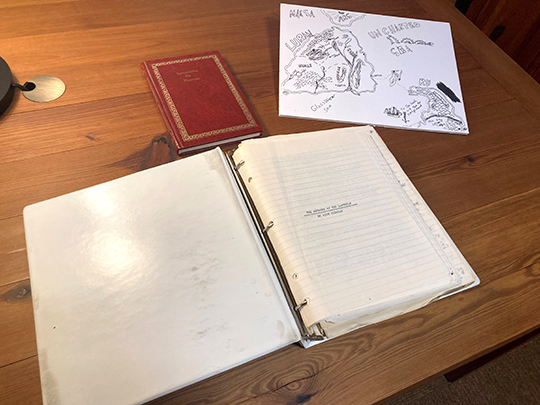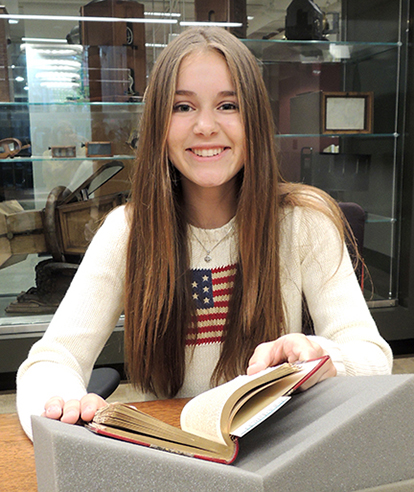 It’s not everyday you get to hold history in your hands! But when Princeton University sophomore Abigail Readlinger gifted us a copy of her children’s novel, I just had to facilitate a connection between her love of American history and our special collections. Later, I asked Abigail to write about her experience and share the inspiration for her charming book…
It’s not everyday you get to hold history in your hands! But when Princeton University sophomore Abigail Readlinger gifted us a copy of her children’s novel, I just had to facilitate a connection between her love of American history and our special collections. Later, I asked Abigail to write about her experience and share the inspiration for her charming book…
Firestone Library’s Special Collections gave me the chance to travel through time. Among its vast array of original documents and fundamental texts is Alexander Hamilton’s very own copy of The Federalist Papers. Writing in the late 1780’s, Hamilton—along with John Jay and James Madison—drafted this series of eighty-five essays in hopes to encourage the ratification of the new Constitution. These Federalist Papers, as evidenced by their substantial contribution to the adoption of our government, are ones of profound and utmost importance. They reveal the nature of American political thought and a corresponding guide by which we ought to live by.
I myself am somewhat obsessed when it comes to The Federalist Papers. Forced to read them during my freshman year of high school, I became immediately attached. I had always loved American history, and The Federalist Papers seemed to transport me directly into the minds of our great Founding Fathers. Desperately bored during the pandemic, but armed with my love for The Federalist Papers, I began to write what is now a published children’s book: The Young Federalists.
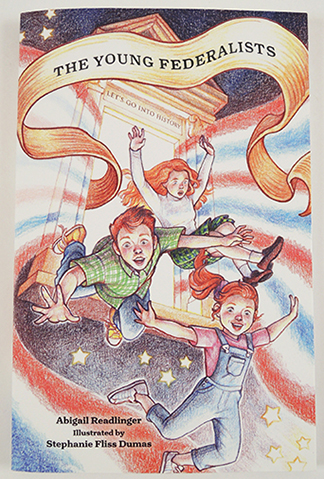
The Young Federalists. Written by Abigail Readlinger and illustrated by Stephanie Fliss Dumas. Mascot Kids, an imprint of Amplify Publishing Group, 2022
The story follows the journey of the Kennedy siblings—Reagan, AJ, and Dolley—as they travel through time, meet Alexander Hamilton and discuss (over a cup of tea!) the importance of Federalist No.1. Just as Hamilton endeavored to inspire his generation through his writing, so also do I hope to inspire mine. The value of the American way is timeless—from then to now, for old and for young.
So when I heard Hamilton’s personal copy of The Federalist Papers just so happened to be located in my own university’s special collections, I jumped at the opportunity to see it.
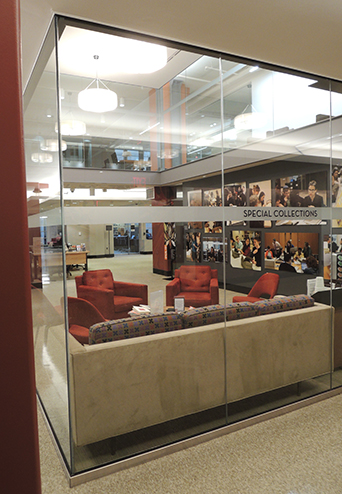
I still cannot quite articulate the feeling of flipping through the pages of a book both so informative in my life and belonging to one of my most beloved heroes. In 2024, author of The Young Federalists, I was holding the same book that Alexander Hamilton, author of The Federalist Papers, once held over two hundred years earlier.
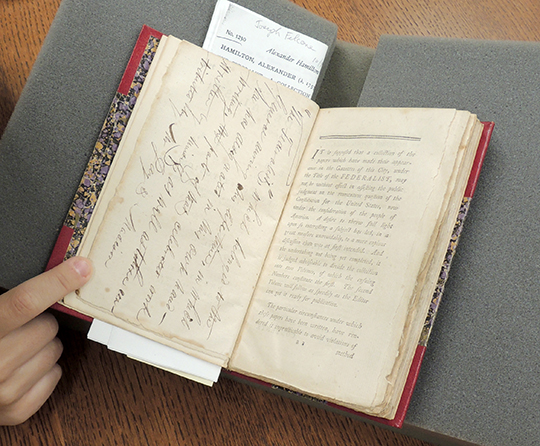
The Federalist Papers. Special Collections, Princeton University Library.
Just like the characters in my book, I was having my own time travel adventure. Visiting special collections, peering over the handwritten scribblings of Hamilton’s notes, and experiencing history hands on, has been by far one of my favorite Princeton experiences. There is so much to explore in our university’s incredible collection, and to have had this opportunity has really been beyond my wildest dreams.
Would you like to see inside this copy of The Federalist Papers? You’ll find a digitized version here. All are welcome to conduct research in Special Collections at Princeton University. If you are interested in visiting, you will find more information here. Do you have a question for Abigail? Email or visit her Instagram.

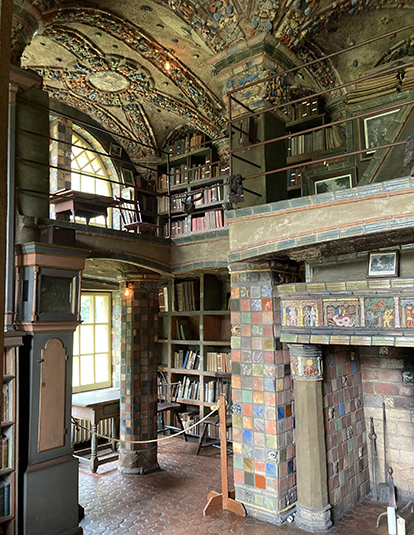 Over the years, I have found myself in a number of interesting libraries and literary settings, but today I wanted to share one that is truly unique. The entire room…in fact the entire mansion is constructed of poured concrete. This unusual library is just one of the rooms in
Over the years, I have found myself in a number of interesting libraries and literary settings, but today I wanted to share one that is truly unique. The entire room…in fact the entire mansion is constructed of poured concrete. This unusual library is just one of the rooms in 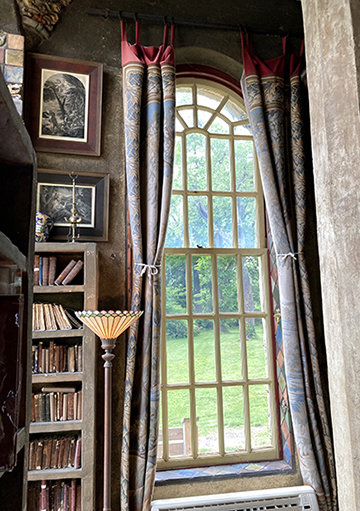 An “archaeologist, anthropologist, ceramicist, scholar and antiquarian,” Mercer had the home built between 1908-1912. It has over forty rooms, extensive grounds, a multitude of fireplaces, and a plethora of windows (including a little one I spotted embedded in a chimney!). The mansion’s exterior and frame was crafted exclusively from poured concrete. Much of the interior is concrete as well, including shelves, desks, chairs, even dressers!
An “archaeologist, anthropologist, ceramicist, scholar and antiquarian,” Mercer had the home built between 1908-1912. It has over forty rooms, extensive grounds, a multitude of fireplaces, and a plethora of windows (including a little one I spotted embedded in a chimney!). The mansion’s exterior and frame was crafted exclusively from poured concrete. Much of the interior is concrete as well, including shelves, desks, chairs, even dressers!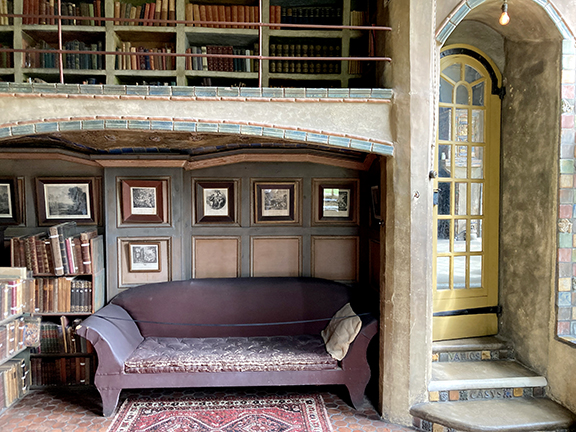
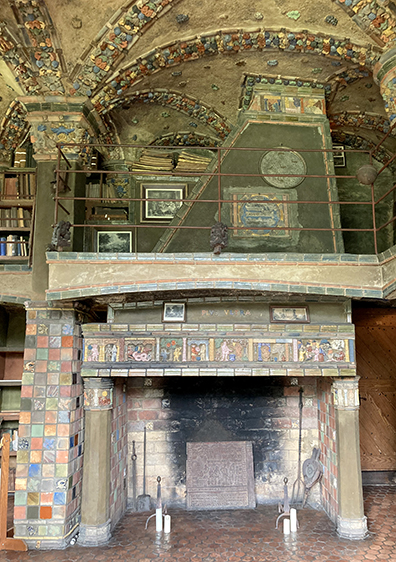
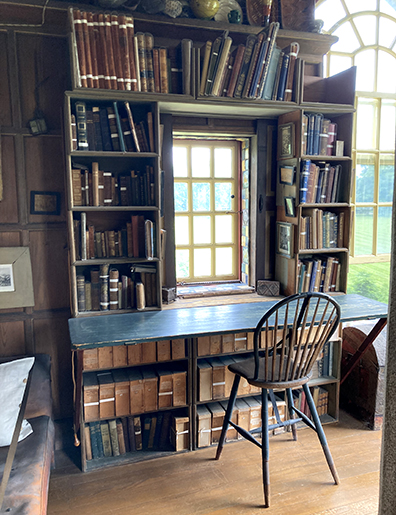
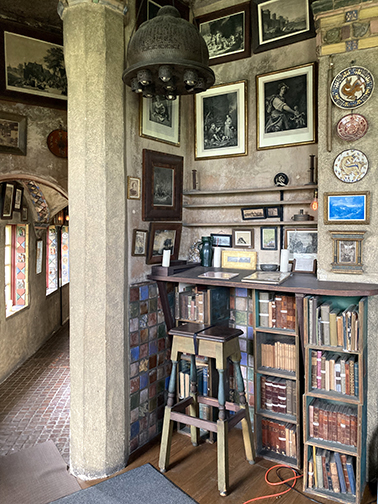
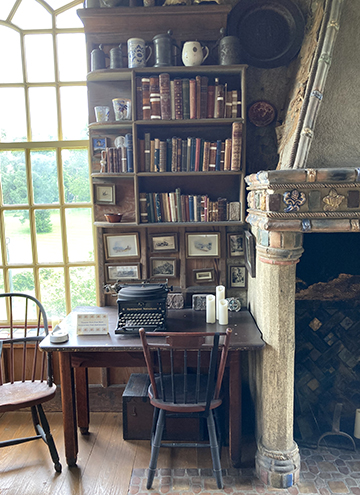 The home tour was fascinating, but we were wholly unprepared for Mercer’s other building, a six-story castle (also made of reinforced concrete) that now serves as the
The home tour was fascinating, but we were wholly unprepared for Mercer’s other building, a six-story castle (also made of reinforced concrete) that now serves as the 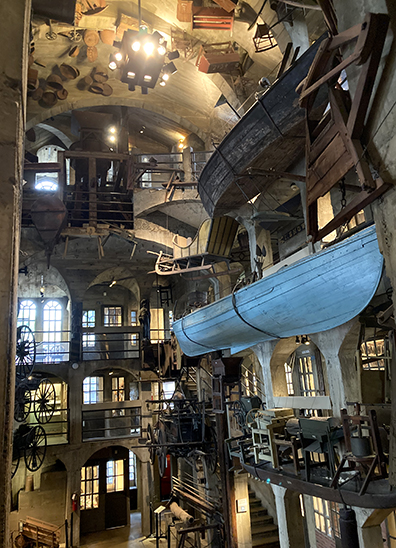
 Today, I am delighted to introduce guest blogger Dr. Miranda Sachs! Miranda studied History at Princeton University, and graduated in 2011. She worked extensively at our library, both in special collections and with me in community outreach. Miranda earned her PhD at Yale, and is now an assistant professor of European History at Texas State University.
Today, I am delighted to introduce guest blogger Dr. Miranda Sachs! Miranda studied History at Princeton University, and graduated in 2011. She worked extensively at our library, both in special collections and with me in community outreach. Miranda earned her PhD at Yale, and is now an assistant professor of European History at Texas State University.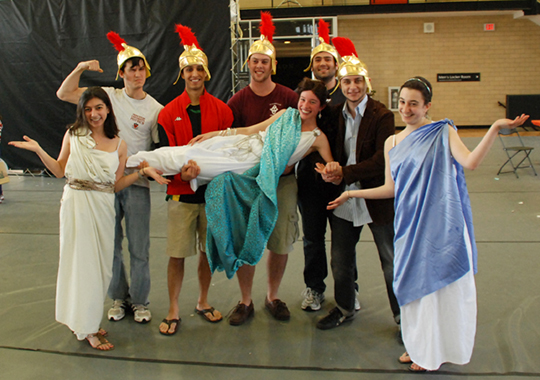
 Because of the new Lightning Thief mini-series, the library has some of the highlights from Riordan’s collection on display. As soon as I walked in the door, I saw a shirt for Camp Half-Blood. The display case had a replica of Riptide used for the film and some neat photos of Riordan speaking to kids. It also had hand-written copies of stories Riordan wrote as a kid! The room where I got to look at the documents had art on display from the covers of some of the books.
Because of the new Lightning Thief mini-series, the library has some of the highlights from Riordan’s collection on display. As soon as I walked in the door, I saw a shirt for Camp Half-Blood. The display case had a replica of Riptide used for the film and some neat photos of Riordan speaking to kids. It also had hand-written copies of stories Riordan wrote as a kid! The room where I got to look at the documents had art on display from the covers of some of the books.
